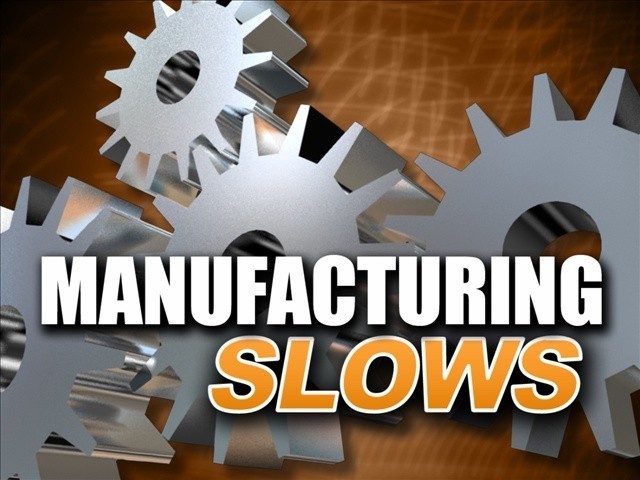WASHINGTON - U.S. manufacturing shrank in June for the first time in nearly three years, adding to signs that economic growth is weakening.
Production and exports declined, and the number of new orders plunged, according to a report released Monday by the Institute for Supply Management (ISM).
The slowdown comes as U.S. employers have scaled back hiring, consumers have turned more cautious, Europe faces a recession and manufacturing has slowed in big countries like China.
"This is not good," said Dan Greenhaus, chief economic strategist at BTIG, an institutional brokerage. Though the report "does not mean recession for the broader economy, it is still a terribly weak number."
The trade group of purchasing managers said its index of manufacturing activity fell to 49.7, down from 53.5 in May. It's the lowest reading since July 2009, a month after the recession officially ended. Readings below 50 indicate contraction.
Economists said the manufacturing figures were consistent with growth at an annual rate of 1.5 percent or less. That would be down from the January-March quarter's already tepid annual pace of 1.9 percent.
"Our forecast that the U.S. will grow by around 2 percent this year is now looking a bit optimistic," said Paul Dales, an economist at Capital Economics.
Stocks fell sharply after the report was released but recovered by the end of the day. The Dow Jones industrial average closed 8.7 points lower at 12,871, and broader indexes ended the day up.
Most economists aren't yet predicting another recession. Still, manufacturing is faltering at a precarious time.
Americans have pulled back on spending, which drives roughly 70 percent of growth.
Manufacturing will likely stay weak for the next few months. The ISM's gauge of new orders, a measure of future activity, plunged from 60.1 to 47.8. That's the first time it has fallen below 50 since April 2009, when the economy was still in recession.
Fewer new orders reflect growing concerns of businesses. In addition to slower global growth and less spending by U.S. consumers, many companies worry that U.S. lawmakers won't extend a package of tax cuts at the end of the year.
Bricklin Dwyer, an economist at BNP Paribas, said the uncertainty "has left businesses unwilling to invest."
The sharp drop in U.S. factory activity overshadowed more positive news on housing.
Construction spending rose 0.9 percent in May from April, the Commerce Department said in a separate report Monday. It was the second straight monthly increase, though the level of spending still isn't healthy.
The increase was driven by a surge in residential construction. Home sales are up from the same month last year. Mortgage rates are at the lowest levels in history. And prices have begun to stabilize in most markets.
The economy could also get a boost this summer from lower gas prices, which have tumbled more than 60 cents per gallon since peaking in April. The result is that consumers have more money to spend on other goods, from autos and furniture to electronics and vacations, that fuel economic growth.
Saturday
August 23rd, 2025
12:26AM









